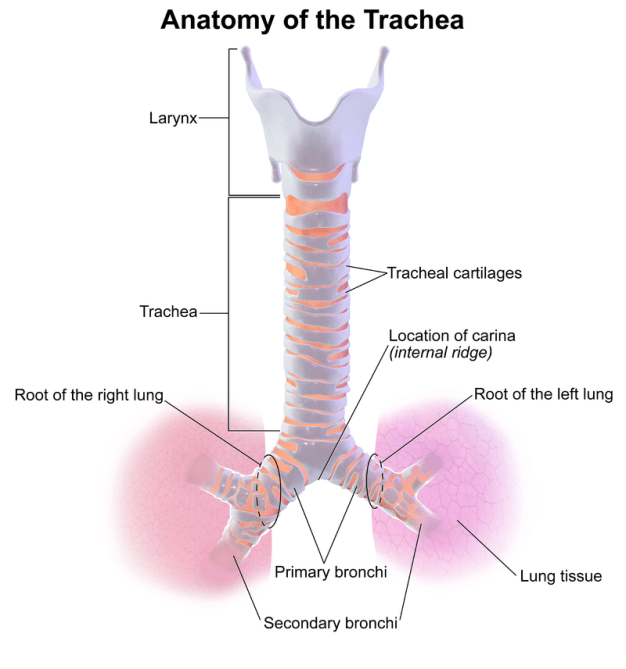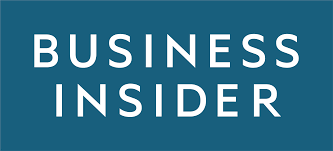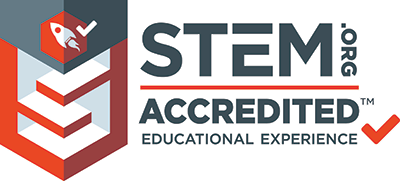Human Respiratory System
Grade 5 Science Worksheets
The human respiratory system is a complex network of organs and tissues that facilitate the process of respiration, which involves the exchange of oxygen and carbon dioxide between the body and the external environment. It supplies oxygen to the body’s cells and removes carbon dioxide, a waste product of cellular metabolism.
The major components of the respiratory system include the nasal passages, pharynx (throat), larynx (voice box), trachea (windpipe), bronchial tubes, and lungs.
Breathing is a process of moving air into and out of the lungs for gaseous exchange with the internal body by bringing in oxygen and flushing out carbon dioxide. Breathing is a part of a process called respiration, wherein, oxygen gas is utilized by the cells to produce energy, and carbon dioxide gas is released as waste.
Hence, the process of respiration can be broken down into three basic steps:
- Inhaling oxygen from the surroundings.
- Utilizing oxygen to get energy from food.
- Exhaling carbon dioxide released during energy production.
Schedule a Free session to clear worksheet doubts
No credit card required, no obligation to purchase.
Just schedule a FREE Sessions to meet a tutor and get help on any topic you want!
Anatomy
The anatomy of Respiratory System consists of the Respiratory tract. It comprises of the following parts:
- Nasal Cavity
- Pharynx
- Larynx
- Trachea
- Bronchi
- Lungs

Functions of the Parts of the Human Respiratory System
1. Nasal Cavity
The nasal cavity is the uppermost part of the respiratory system and provides the passage for the inhaled air from the nostrils to the rest of the respiratory tract. It is present above and behind the nose. Its function is to warm and moisturize the air entering the lungs. Hairs and mucus lining the nasal cavity help to prevent environmental contaminants like dust, mold, and pollens from entering the body.

2. Pharynx
The pharynx is a hollow tube that is about 5 inches long. It is the common passageway leading from the mouth to the esophagus and nose to the larynx, making it a part of both the digestive system and the respiratory system in humans. Its function is to regulate the passage of air from the nasal cavity into the lungs during respiration. It is divided into three sections, the nasopharynx (adjoining the nasal cavity), oropharynx (adjoining the oral cavity), and laryngopharynx (adjoining the larynx).
3. Larynx
The larynx is about 5 cm long and it is located between the pharynx and trachea. The main function of the larynx is to allow only air to pass through the trachea while preventing food and drinks from blocking the airway. It protects the lower airway by closing abruptly upon mechanical stimulation to prevent foreign bodies from entering the respiratory tract by coughing and other reflexive actions.
The larynx is also called a voice box as it houses the vocal folds and manipulates pitch and volume.
4. Trachea
Trachea, also known as the windpipe, is a wide, hollow tube that connects the larynx (upper respiratory tract) to the bronchi and lungs. It runs down behind the breastbone or sternum and branches into the two primary bronchi. Trachea transports air to and from the lungs when a person breathes during respiration. It is surrounded by flexible cartilage rings that allow it to move and flex during breathing.
Test your knowledge about the human respiratory system with our free worksheets. Download it here.

Learn more about Human Respiratory System and other important topics with 5th Grade Science Tutoring at eTutorWorld. Our expert science tutors break down the topics through interactive one-to-one sessions. We also offer the advantage of customized lesson plans, flexible schedules and convenience of learning from home.
eTutorWorld Understands Math Tutoring | Online Math Worksheets are Important Tools
Understanding graphs, charts, and opinion polls in a newspaper, for calculating house and car payments, and for choosing a long-distance telephone service are impossible without strong math skills …and the only way to develop strong math skills is by constant practice.
‘Practice makes a man perfect’ holds true for no other field better than for math. A middle or high school student must set aside a minimum of an hour for math every day. Other than textbooks, worksheets help you revise and understand concepts better.
Our expert tutors prepare online maths worksheets that are age and grade-appropriate. Grade-wise math worksheets for Elementary Math, Arithmetic, Pre-Algebra, Algebra, Geometry, Trigonometry, Statistics, Pre-Calculus and Calculus can be solved to improve math skills, to get ahead or to even catch up.
You may download these FREE online math worksheets in the PDF format, and then print and email us their solutions for a free evaluation and analysis by eTutorworld’smath expert tutors.
You may solve these worksheets by yourself or with your peers while studying together.
The Answer Key at the end of each worksheet allows for a self-evaluation.
Personalized Online Tutoring
eTutorWorld offers affordable one-on-one live tutoring over the web for Grades K-12, Test Prep help for Standardized tests like SCAT, CogAT, MAP, SSAT, SAT, ACT, ISEE and AP. You may schedule online tutoring lessons at your personal scheduled times, all with a Money-Back Guarantee. The first one-on-one online tutoring lesson is always FREE, no purchase obligation, no credit card required.
For answers/solutions to any question or to learn concepts, take a FREE CLASS.
No credit card required, no obligation to purchase.
Just book a free class to meet a tutor and get help on any topic you want!

5. Bronchi
Trachea further divides into two smaller tubes called bronchi, one bronchus for each lung. They are the airways that connect the trachea to the lungs. The air that we breathe in reaches the lungs via the nasal cavity, pharynx, larynx, trachea, and bronchi. The bronchi also expel air from the lungs back to the upper respiratory tract. They are the highways for gas exchange, with oxygen going to the lungs and carbon dioxide leaving the lungs through them. The bronchi are made up of smooth muscles with walls of cartilage. Each bronchus enters a lung and branches out as thousands of tiny bronchioles, and further into air sacs called alveoli.
6. Lungs
Lungs are a pair of organs present on either side of the chest cavity. The right lung is bigger than the left, which shares space with the heart. Gas exchange takes place between the millions of alveoli in the lungs and the blood vessels (capillaries) that surround them. The inhaled oxygen moves from the alveoli to the blood in the capillaries and carbon dioxide from blood moves into the alveoli. It is then expelled through the respiratory tract.
The normal breathing rate for a person at rest is 12-20 times per minute which amounts to 2,900 gallons of air per day.
Relationship between the Respiratory System and Digestive System
Once the oxygen reaches the blood, it is circulated to all the cells. Small food particles (glucose) from the digestive system are also transported to the cells. Oxygen reacts with glucose to gives us energy and carbon dioxide in the cells. The carbon dioxide is transported in the blood back to the lungs from where it is given out through our respiratory tract.
Clinical Significance
The human respiratory tract is exposed to the outside world, making it easy for germs like bacteria and viruses to enter. The seven most common childhood respiratory diseases are –
- Influenza
- The common cold
- Asthma
- Sinusitis
- Bronchitis
- Croup 5
- Strep throat
Coronavirus disease 2019 or COVID-19 is an infectious disease that infects the lungs and is caused by (SARS-CoV-2) severe acute respiratory syndrome coronavirus 2.
The most important approach to a healthy respiratory system is preventing contact with these germs by washing hands frequently, staying away from infected individuals, keeping your surroundings clean, and a healthy lifestyle with balanced diets and exercise.

Check Point
Fill in the blanks:
- Hairs and ___________in the nasal cavity help to prevent dust and pollens from entering the body.
- ___________is the common passageway which is a part of both the digestive system and respiratory system in humans.
- The trachea is also known as the
- The normal breathing rate is ________ breaths per minute in a human being.
- Each bronchus ends in tiny air sacs inside the lungs known as __________.
- The respiratory tract sequentially includes the nasal cavity, _______, ________, _______, _______ and lungs.
Answer Key
- Mucus
- Pharynx
- Windpipe
- 12-20
- Alveoli
- Pharynx, Larynx, Trachea, Bronchi
Frequently Asked Questions (FAQs)
What is the respiratory system?
The respiratory system is the collection of organs and tissues in the body that enable us to breathe. It is responsible for the exchange of oxygen and carbon dioxide between the body and the external environment.
What are the main organs of the respiratory system?
The main organs of the respiratory system include the nose, nasal passages, pharynx, larynx, trachea, bronchial tubes, and lungs.
How does the respiratory system work?
When we inhale, air enters the body through the nose or mouth, travels down the respiratory tract, and reaches the lungs. In the lungs, oxygen is transferred to the bloodstream, while carbon dioxide, a waste product, is removed from the bloodstream and exhaled during exhalation.
What is the role of the diaphragm in the respiratory system?
The diaphragm is a dome-shaped muscle located at the base of the lungs. It plays a crucial role in breathing by contracting and flattening during inhalation, which creates space in the chest cavity and allows the lungs to expand. When it relaxes, the diaphragm helps to push air out during exhalation.
What are common respiratory disorders?
Common respiratory disorders include asthma, chronic obstructive pulmonary disease (COPD), pneumonia, bronchitis, and respiratory infections like the common cold and influenza.
What are the five functions of the lungs?
The lungs perform five main functions: oxygenation, gas exchange, filtration, regulation of pH balance, and immune defense. They help supply oxygen to the body, remove carbon dioxide, filter air, regulate pH levels, and protect against infections.
Schedule a Free session to clear worksheet doubts
No credit card required, no obligation to purchase.
Just schedule a FREE Sessions to meet a tutor and get help on any topic you want!
Pricing for Online Tutoring
| Tutoring Package | Validity | Grade (1-12), College |
|---|---|---|
| 5 sessions | 1 Month | $139 |
| 1 session | 1 Month | $28 |
| 10 sessions | 3 months | $269 |
| 15 sessions | 3 months | $399 |
| 20 sessions | 4 months | $499 |
| 50 sessions | 6 months | $1189 |
| 100 sessions | 12 months | $2249 |
5th Grade Free Worksheets
- Galaxies
- The Solar System
- Planets
- Structure of Earth
- Plate Tectonics
- Earthquakes
- Volcano and Folded Mountains
- Mountains and Oceans
- Rocks and Fossils
- The Water Cycle
- What Causes Weather Patterns?
- Types of Precipitation
- Climate
- Difference between Weather and Climate
- Impact of Environmental Changes on Humans and Other Organisms
- Plants also Adapt
- Body Systems
- Skeletal System
- Human Nervous System
- Circulatory System
- Respiratory System
- Reproductive System
- Digestive System
- Excretory System
- Atomic Theory
- States of Matter
- Mixtures
- Chemical and Physical Changes
- Types of Energy
- Energy Transformations
- What is Electricity?
- Properties of Electricity
- Uses of Electricity
- Electrical Circuits
- What is Force?
- Newton’s Laws of Motion
IN THE NEWS

Our mission is to provide high quality online tutoring services, using state of the art Internet technology, to school students worldwide.
Online test prep and practice
SCAT
SSAT
ISEE
PSAT
SAT
ACT
AP Exam
Science Tutoring
Physics Tutoring
Chemistry Tutoring
Biology Tutoring
Math Tutoring
Pre-Algebra Tutoring
Algebra Tutoring
Pre Calculus Tutoring
Calculus Tutoring
Geometry Tutoring
Trigonometry Tutoring
Statistics Tutoring
Quick links
Free Worksheets
Fact sheet
Sales Partner Opportunities
Parents
Passive Fundraising
Virtual Fundraising
Our Expert Tutors
Safe and Secure Tutoring
Interactive Online Tutoring
After School Tutoring
Elementary School Tutoring
Middle School Tutoring
High School Tutoring
Home Work Help
Math Tutors New York City
Press
©2022 eTutorWorld Terms of use Privacy Policy Site by Little Red Bird
©2022 eTutorWorld
Terms of use
Privacy Policy
Site by Little Red Bird






